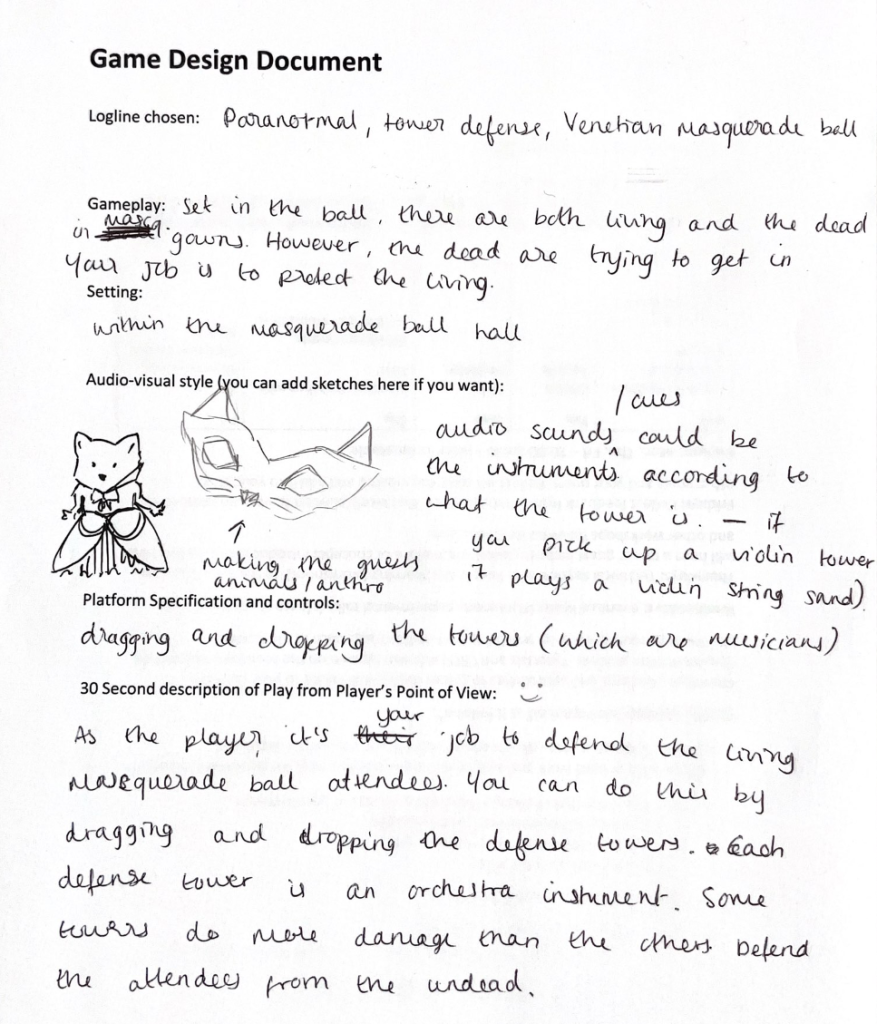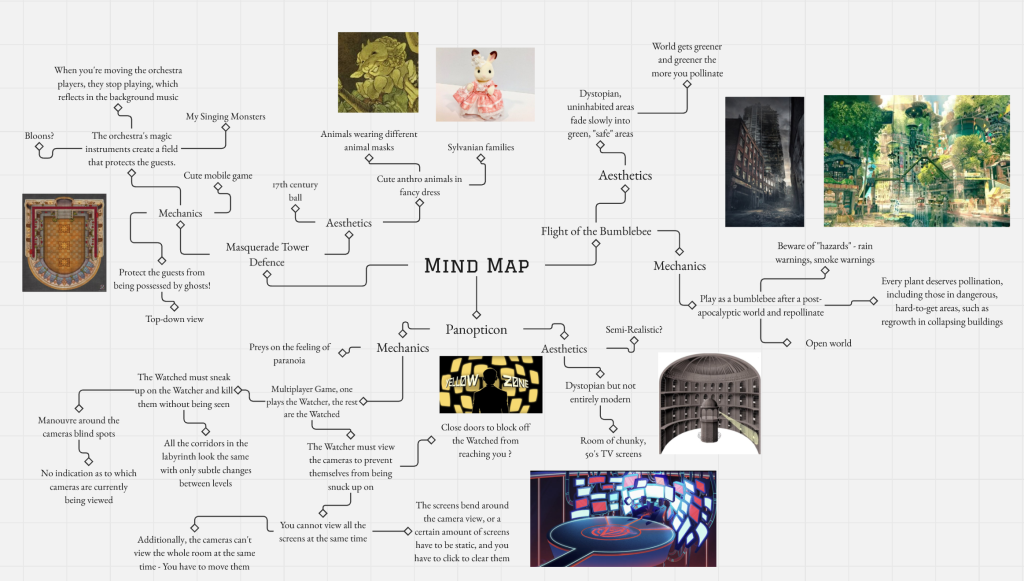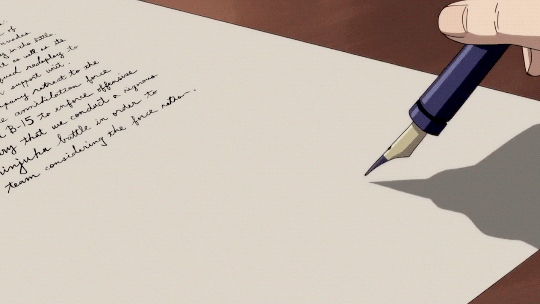Our first week of year 2’s lecture outlined what was expected of us this semester. This was when I found out our brief for the year: to make a Game Design Document for a game concept of our choosing!
What is a Game Design Document?
In simple terms, a GDD is a process of documenting the game to help integrate all corners of it – because a game in all its unique, overlapping, complexity needs specific guidelines for different departments in order to make a cohesive game. A GDD will keep it cohesive, promote clarity and uniformity, prevents overambition, and ensures that people stick to a schedule. It is much more efficiant to make a game this way.
To see my full breakdown on what a Game Design Document is, click here to view my Week 1 Reading.
What is my Game Concept?
The parameters for the game concept were as such: no parameters. Admittedly, I didn’t have many ideas at first. Being able to do anything with zero constraints isn’t very inspiring; it doesn’t get the imagination flowing and ideas sparking. If I wanted an idea – a good idea – I’d have to work for it.
WORKSHOP 1
Our very first workshop was to create a game based off adjectives listed by our birth-dates. Within my group of 3 (Paula, Ejay, and myself), we each would arrive at a set of words that would describe our game. My birthdate dictated a surivival horror or stealth set in a demon-filled hellscape, with my name – I – to dictate the feel: idle, impervious, imaginative, industrious… (Turns out “I” was a bit hard to come up with.)
Paula’s was a Tower-Defence Masquerade based around the letter P, which we decided would be “paranormal”. This immediately captured all of our attention, so we decided to build a game on that – coming up with the idea of a cute, animal masquerade being haunted by ghosts. You play as the orchestra, blessed with magical instruments that ward away the ghosts trying to possess the dancing animals.

GAME CONCEPT DEVELOPMENT
This was my original mindmap of game ideas. As you can see, I reskinned the masquerade tower defence idea slightly, and came up with two others: one where you play a small bumblebee that repollinates the world after its apocalypse – a theme about the regrowth of Earth and nature’s persistance – and one horror game that preys on the feeling of paranoia.

Inspired by Jesse Schell’s Lenses of Emotion, Experience, and Inspiration (which I did for my Week 1 Reading) from his book “The Art of Games Design”, for PARANOIA I chose a specific emotion I wanted the player to feel – something to pinpoint – so I could build around that. The emotion I chose was, obviously, paranoia. As such, this was the game I was most excited about. The others didn’t come from an emotion – they might have sweet themes and nice aesthetics – but this felt more tangible… More fun.
The videogames that have historically gripped me the most have always been horror games. When I was 12, I was obsessed with titles such as Layers of Fear and Five Nights at Freddy’s, because of the specific, subtle ways they manipulate the player’s brain. So I began to research how to make a game that would cultivate and prey on a feeling of paranoia in the player.
Goals for this Semester:
GDD Deliverables:
- Mini Art Bible (including at least 1 3D model)
- Mini Word Bible
- Mini Narrative Bible
- Mini Sound Bible
- Writing Samples
- Gameplay Design
Creative Writing Module Deliverables:
- A 500 word review of a creative work
- A 2500 word portfolio of two pieces or more requiring:
- One work of fiction
- One work of creative nonfiction
Using WordPress:
While technically only required for my Semester 1 portfolio of a Game Design Document, I have also decided to put my other work here too, to keep it all in one, centralised place.

Leave a Reply